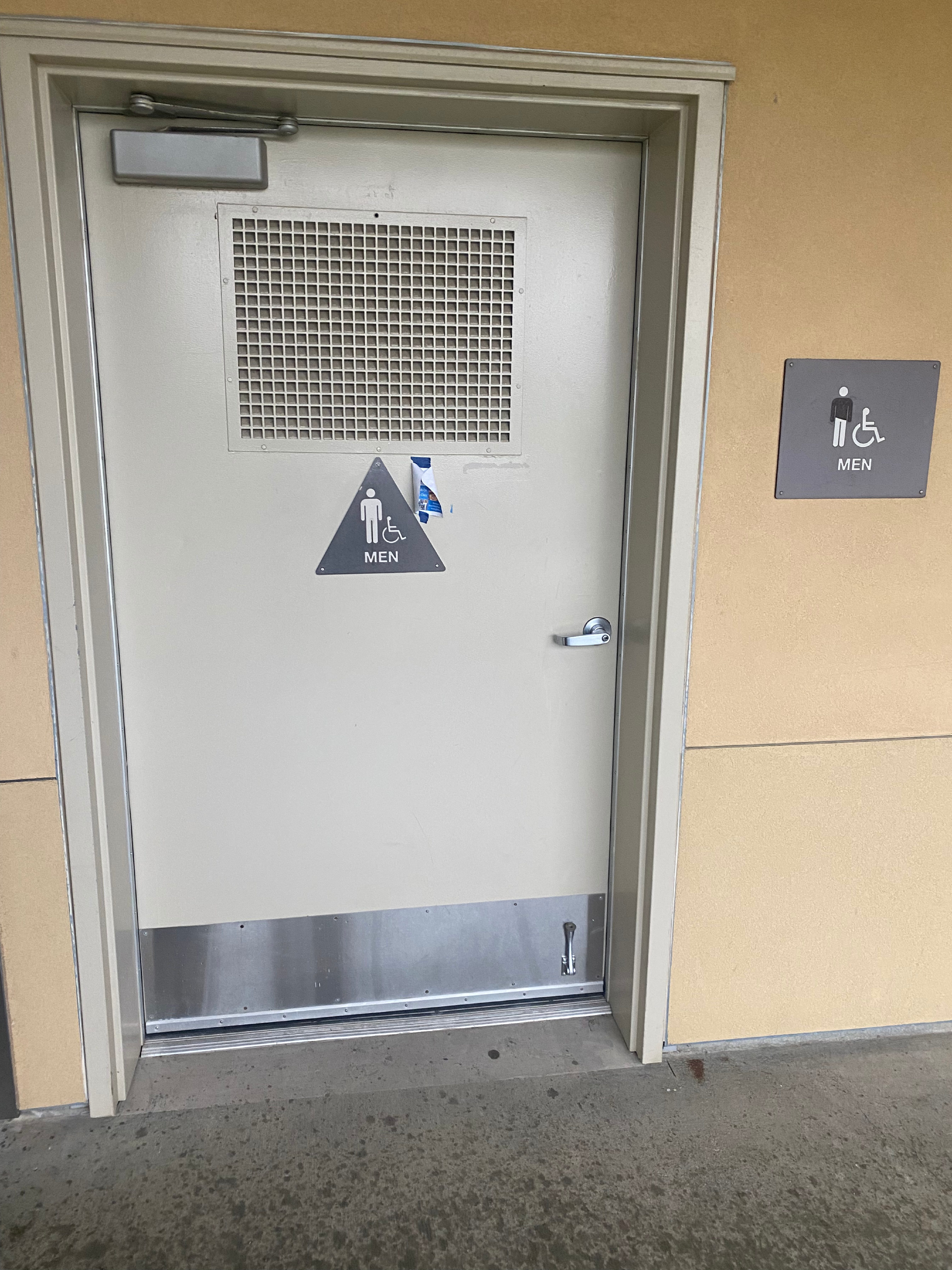Is Vista’s Dress Code Strict?
Eagle time: Oct 6, 2015
The dress code helps students dress as if they are in a workplace, but it also limits the clothes they can wear. There is a big debate over dress code, and while some say it’s too strict and useless, others say dress code is necessary for the learning environment.
One dress code rule that Vista and six other schools have in common is the “No Bare Midriffs” rule. These schools (listed below) share similar rules in their dress code, but each one has unique dress codes with rules that other schools might not have in their own. These dress codes vary, with some having more rules than others, but all schools have in common “undergarments should not be visible,” and “must wear shoes”. (Wearing shoes is not only part of the dress codes, it’s part of the state law.)
Folsom High School requires all straps to be at least one and a half inches and doesn’t allow pajamas, slippers, halters, low-cut tops, tube tops, off the shoulder tops, and undershirts. Folsom High also requires shorts, skirts and dresses to be at the tip of fingers when arms are extended.
Cordova High School doesn’t allow holes in jeans. This school prefers collared shirts, though it isn’t required. All shirts must have sleeves, and like Folsom High School, pajamas, slippers, crop tops, or any top that does not cover the midriff are not allowed. Skirts, shorts and dresses must pass the fingertips when arms are extended. In addition to these rules, headwear cannot be worn in classrooms, and anything that affects the learning environment negatively is not allowed.
At Folsom Lake High School, hats are allowed in classrooms if the teacher approves of it, but no hoods or sunglasses. Shirts must cover the torso, meaning backless garments, strapless tops, and bare midriffs are not allowed. Students are not allowed to wear more than two clothes or accessories that are in red or blue. For example, it would be okay to wear both a red shirt and a red bracelet, but no red pants with it. Night wear such as pajamas and slippers are only allowed for spirit days. Offensive or dangerous clothes are against dress code, and sagging is not allowed.
Kinney High School does not allow clothes with illegal, dangerous and sexual related things on it. Nightwear, tube tops, halter tops and see-through fabrics may not be worn. Only one clothing item in red or blue is allowed to be worn. Clothes must also be neat, groomed, and worn properly, like overall straps must be over the shoulder. Grooming aids like hair rollers are not allowed to be worn or brought to school. Clothes with lettering added to it is not allowed, and dew rags, cloths that are used to cover someone’s head, are allowed as long as they are in black or white, and under a baseball cap.
Some of the dress code rules that Oak Ridge High School includes are “holes, rips, frays, or slits must be 5 inches or more below the student’s bottom,” and “no wheelies.” See-through fabrics like fishnets are not allowed, and just like Kinney High School, grooming aids are not allowed. When the student’s arms are above their head, tops must completely cover skin and overlap the waistband of bottoms. Pajamas are only allowed on spirit days and halter tops, strapless tops, and off the shoulder tops are not allowed.
In Antelope High School, only “Antelope High School” baseball caps are allowed according to their dress code. Antelope High School also requires jean holes above the knee to be covered. Along with Oak Ridge High School, Antelope doesn’t allow bandanas. Wallet chains and sagging are not allowed. Strapless shirts are not allowed, and shirts must fit properly, which means no long T-shirts and no bare midriffs.
Compared to Vista’s dress code, these schools had some rules we don’t have in our dress code, and vice versa. Only Antelope High School and Folsom Lake High School shared the “no tanks with deep arm holes” rule with Vista in their dress codes, but these schools also had some additional rules, much like other schools.
“I think dress code is necessary, but it needs to loosen up,” said sophomore Penny Sokun. She believes that students shouldn’t come to school all naked, but shouldn’t get in trouble for showing a bit of midriff. “Being dresscoded felt unfair because other girls in my class were wearing short shorts too.” When asked about how dress code affects students, Sokun responded, “Students can get angry about the dress code and wouldn’t want to follow it.” Sokun believes that dress code does need to be improved so students who get caught breaking the dress code aren’t angry about the students who get away with it.
“Students break the rules and some get away with them,” sophomore Aya El Sabban said. “I understand if someone is dress coded if they were showing a lot of skin, but dress code is too strict sometimes, and it sexualizes the body in a way that it shouldn’t.”
Kelly Hillesland is an eleventh grade AP English teacher at Vista. “Dress code exists because the belief is we can require students to look appropriate for school, in hopes that this will translate to a professional look for the working world,” she said, “but I just don’t see this as an issue. Kids grow up and conform when they’re adults in the working world.” Hillesland believes that there should be a dress code for clothes that promotes things like drugs and violence, but doesn’t see the need for dress code for things like bare shoulders.
Hillesland believes that dress code takes too much time and energy to enforce it, but she doesn’t see this as an issue. “Lots of people disagree with that, of course, but bare shoulders aren’t distracting,” she said. “Our society sexualizes girls, so their bodies are considered sexy, and boys aren’t. So the trouble falls on the girls, even though their intent is just to be comfortable, trendy, and cool.” Hillesland, however, does see a need for dress code when it comes to wearing something that promotes drugs, alcohol, homophobia, racism, etc.
Kat Kelly, an English 9 and Beginning Composition teacher at Vista, believes that dress code can affect student’s positively and negatively depending whether they follow or break the rules. “School should be a neutral place to learn; it is not a beach, a dance club, or a fashion show,” Kelly said, “It is natural to want to dress up and show off your ‘cute’ clothes, but, unfortunately, we live in a society that promotes a lot of ideals that may be offensive to others.”
“I am also troubled by the amount of alcohol, drug, and violent messages people wear on their shirts or place on their car bumpers,” Kelly said. “School should be a safe place-for all-where we promote an acceptable, appropriate dress code, where nobody is offended by someone else’s choices.” Kelly believes that students break dress code because since this student wore clothes that break dress code and didn’t get in trouble for it, other students think they can wear it too.
Lori Emmington is a vice principal at Vista. “Vista’s dress code is one of the most lenient,” Emmington said. “Some students feel dress code is about body shaming, but it isn’t. It’s more about dressing as if you’re in a workplace.”
A problem with the dress code is only some teachers are enforcing it. “With only a few people enforcing the dress code, it’s unfair,” Emmington said. “We want a gender neutral dress code, where all of the rules apply for boys and girls.” The same rules will apply soon in the dance dress code. Emmington believes that there are no clothes specific for boys or girls.
“Dress code is always evolving with the times,” she said. “Back then, boys were the ones getting dress-coded all the time for sagging, but now it’s the girls, and some students do feel uncomfortable by revealing clothing, and we want to protect them and make them feel comfortable at school.”
About the orange outfits, the reason why dress coded students have to wear them is only because it’s easier. “We can’t let students call parents to bring school appropriate clothes because it just takes too much time,” said Emmington. However, she does allow you to wear P.E. clothes instead, if available.
There’s a lot of controversy around the subject of dress code, but it’s something everyone has to follow.









































